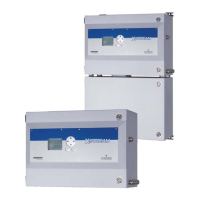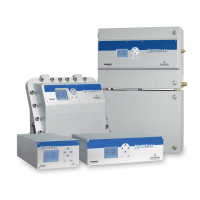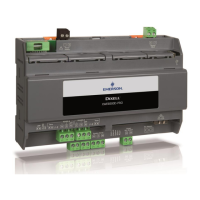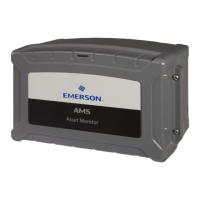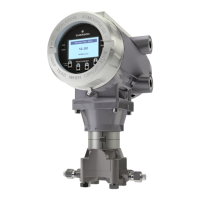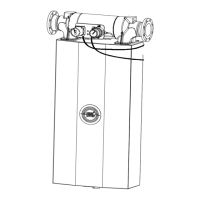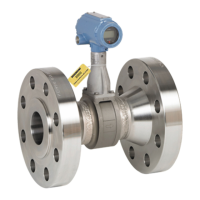Emerson Process Management GmbH & Co. OHG 3-5
X-STREAM XE
Instruction Manual
HASXEE-IM-HS
10/2012
3
Measuring Principles
3.2 Oxygen Measurement
3.2 Oxygen Measurement
Three different principles are used for measu-
ring oxygen concentrations. The principle
used in your specic instrument is given by the
channel code (sample gas designator) on the
nameplate label ( gure on page 2-22):
pO
2
= paramagnetic sensor
eO
2
= electrochemical sensor
tO
2
= trace oxygen sensor
3.2.1 Paramagnetic Measurement
Fig. 3-4: Paramagnetic Oxygen Sensor -
Assembly Principle
1 Permanent magnet
2 Platinum wire
3 Mirror
4 Glass ball
5 Loop
6 Photodetector
7 Light source
8 Preamplier
9 Display
10 Gas inlet
11 Gas outlet
4 1 5 3 6 8
11 7 9
2
10
This oxygen measurement principle is based
on the paramagnetic characteristic of oxygen
molecules:
Two cavernous glass spheres lled with nitro-
gen are arranged in a dumb¬bell conguration.
This dumbbell with a platinum wire is mounted
rotatable inside a strong inhomogeneous ma-
gnetic eld. A small mirror is xed on the front
side of the dumbbell, which reects light from a
light source towards two photo detectors (Fig.
3-4). The dumbbell is surrounded by another
platinum wire, which is bent like a coil around
each glass sphere. It generates a magnetic
eld when supplied by an electric current to
control the dumpbell´s deection.
Oxygen molecules within the sample gas
are attracted be the magnetic eld due to
their paramagnetic characteristic and will
be concentrated into the area of the highest
eld strength in the inhomogeneous eld.
In doing so they displace the nitrogen lled
glass spheres. This generates a torque on
the dumbbell which depends on the oxygen
concentration in the sample gas. The dumbbell
starts to rotate and the light reected by the
mirror on the dumbbell generates a signal on
one of the two photo detectors. Initiated by the
photo detector signal a preamplier drives a
current through the platinum wire surrounding
the dumbbell. This generates a compensating
magnetic eld and rotates the dumbbell back
into its zero position. The compensating cur-
rent gives a direct and linear measure for the
oxygen concentration within the sample gas.
The paramagnetic oxygen detector also
con¬tains a temperature sensor for compen-
sation and a heating ele¬ment to keep the
detector at approx. 55 °C.
Several variations are available including
corrosion resistant, solvent resistant and/or
intrinsically safe (for measuring ammable
gases) versions.
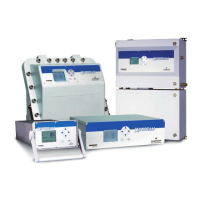
